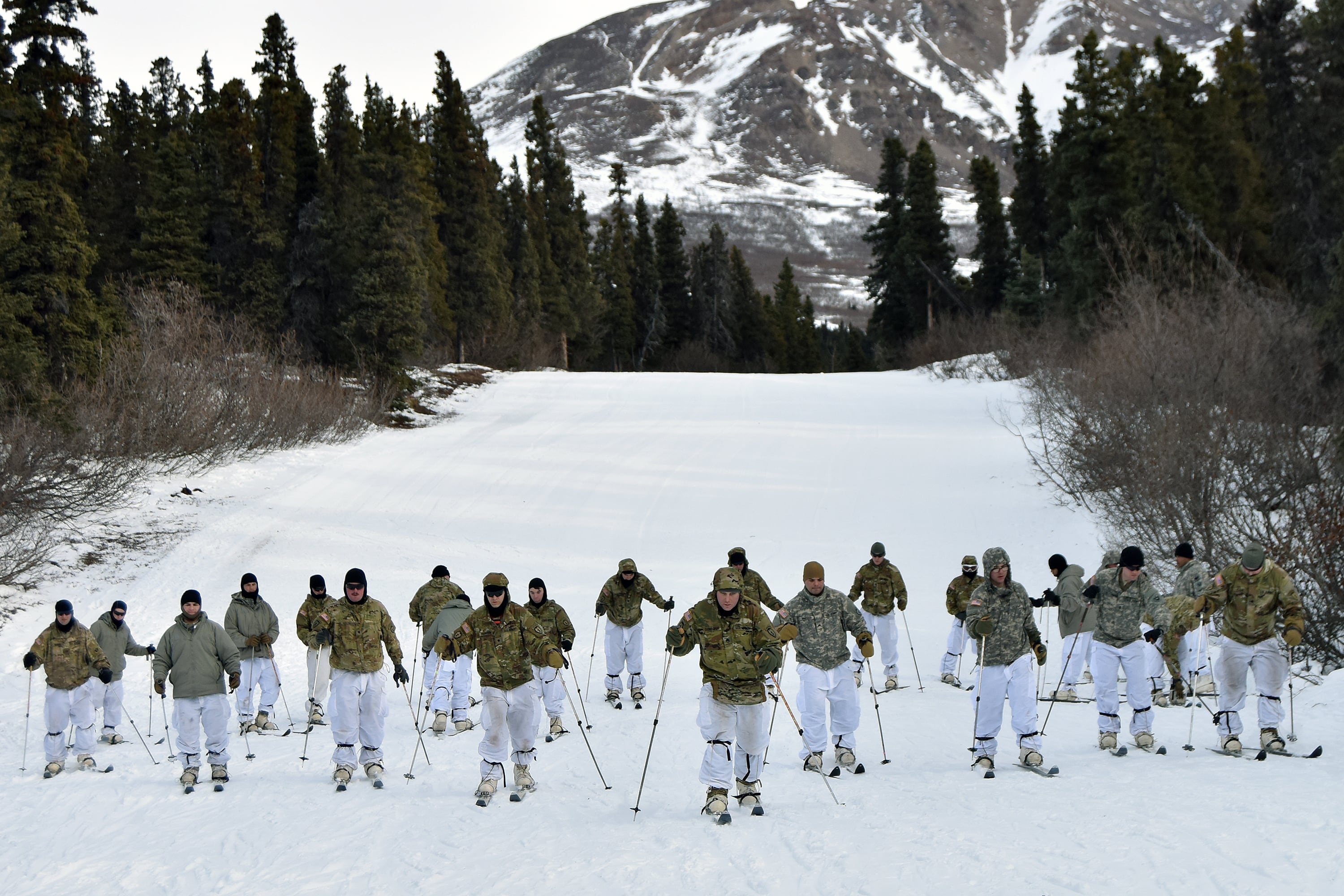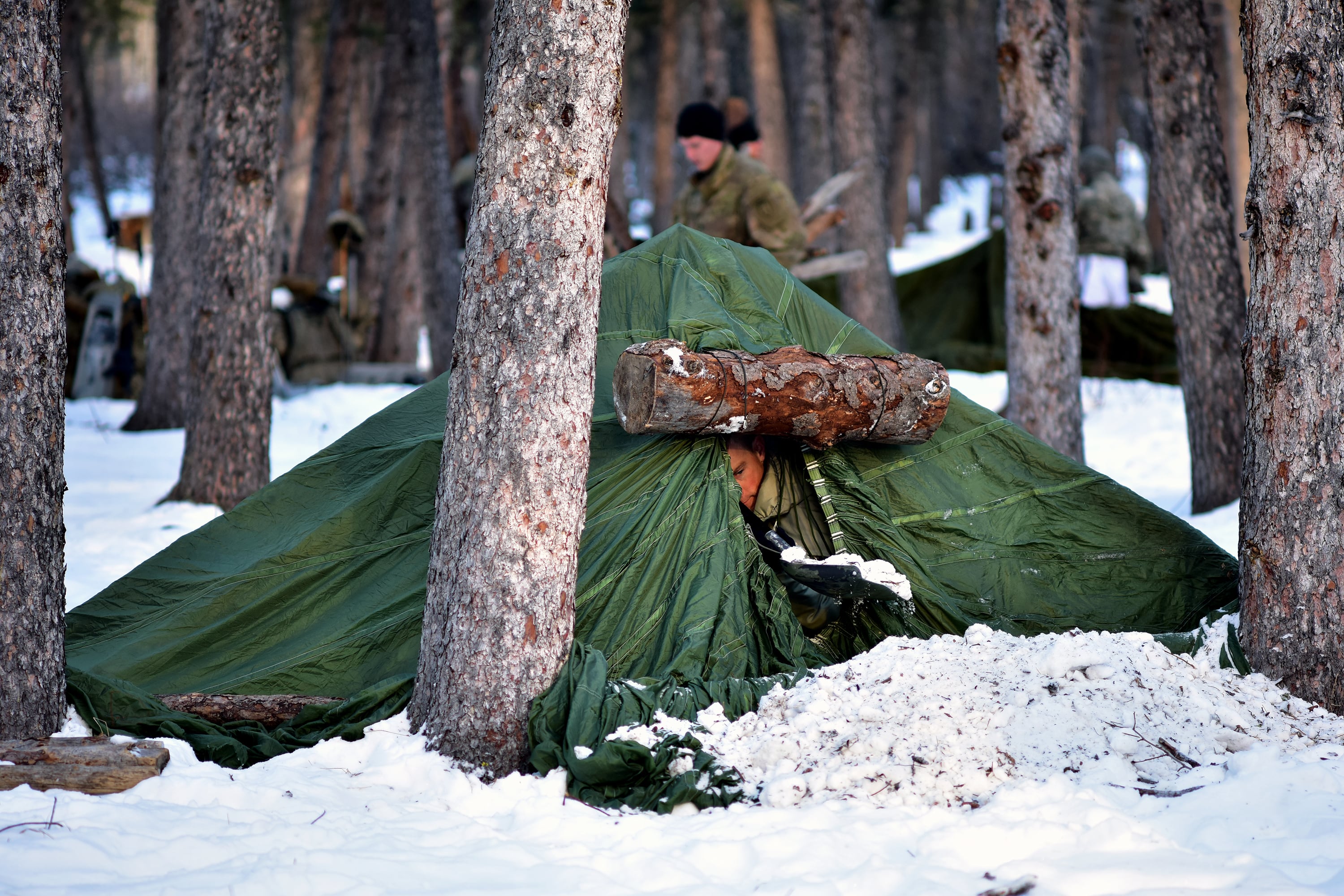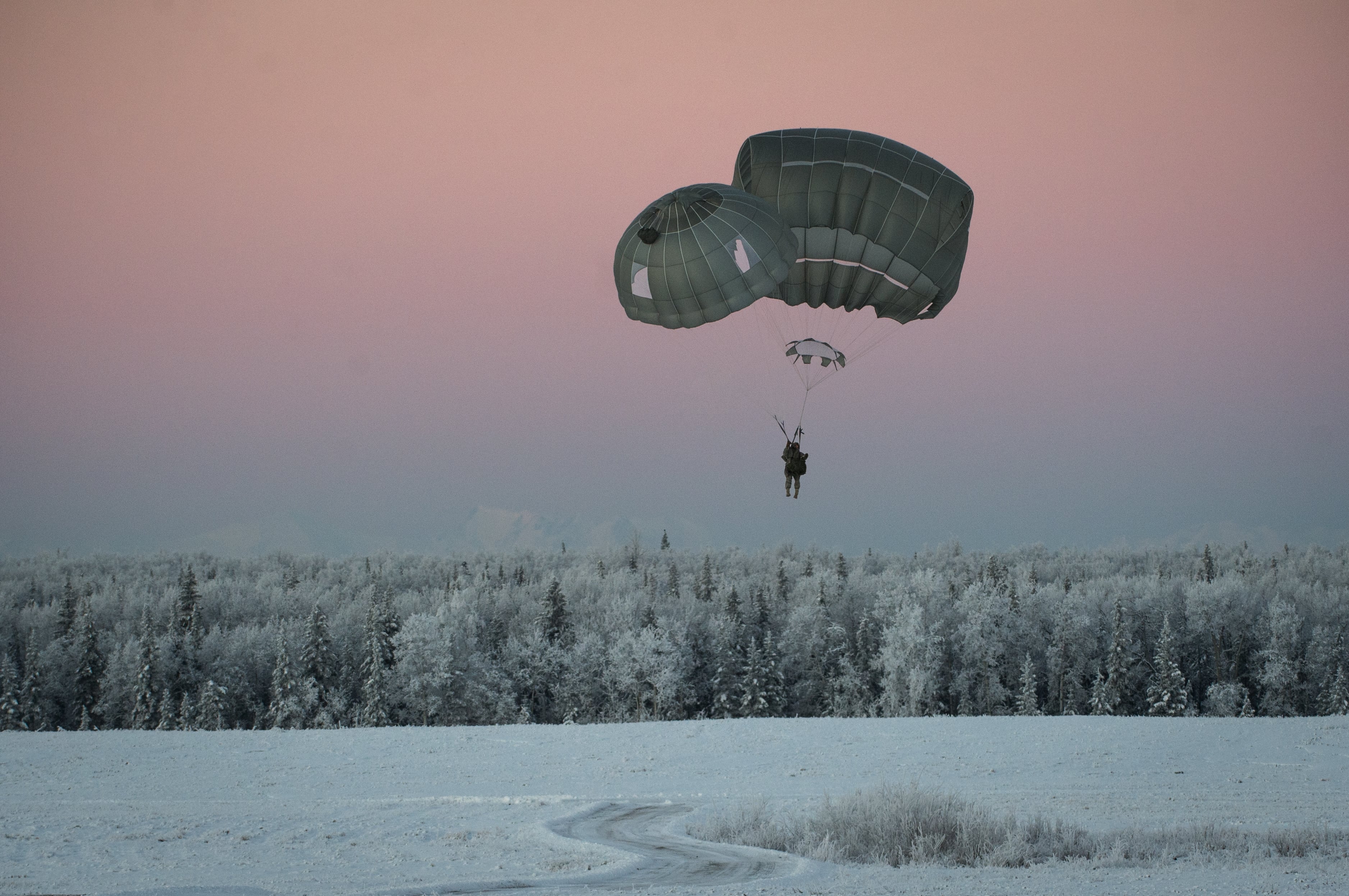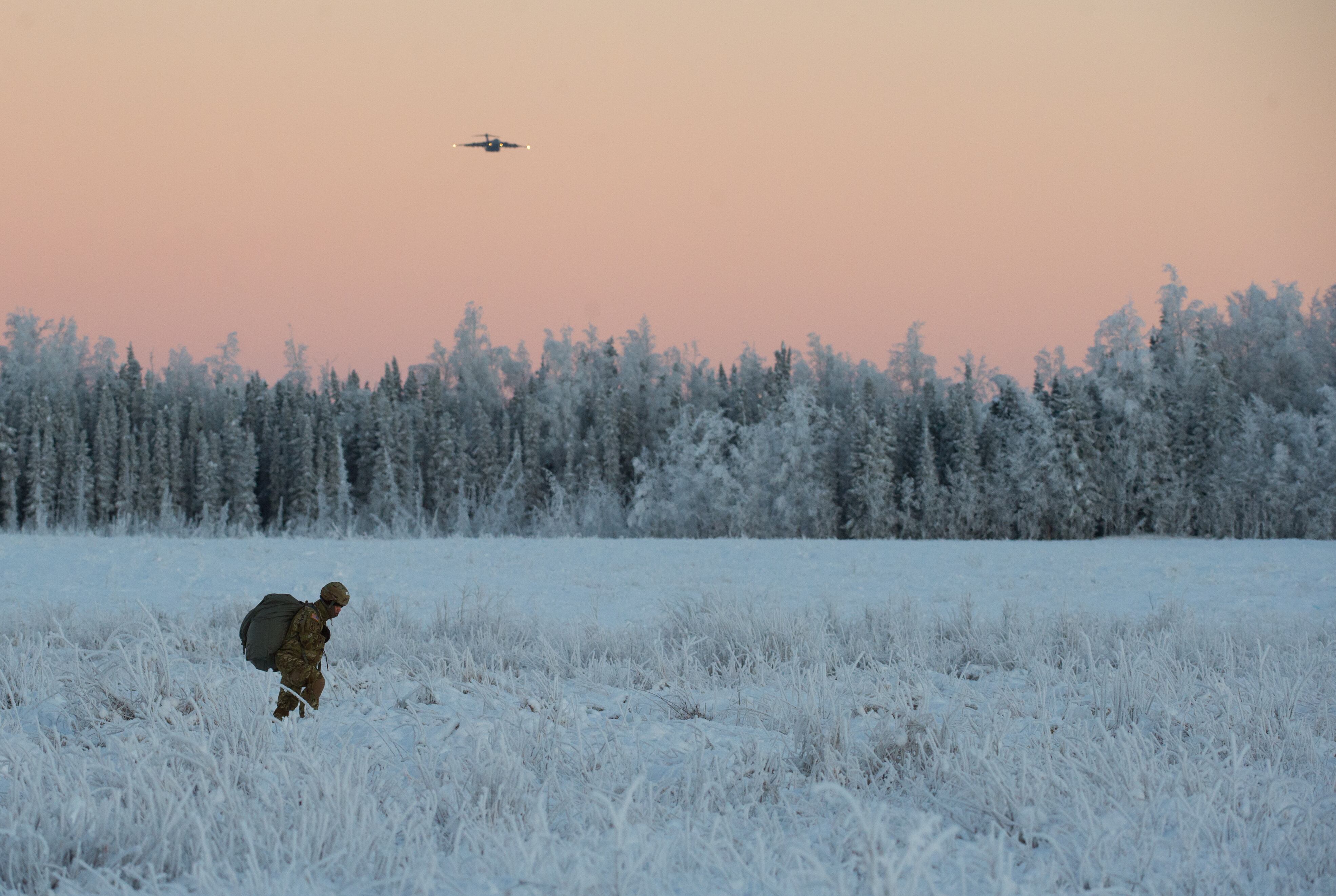For Army Research Physiologist John Castellani, a surge of interest in mastering combat in the extreme cold is translating to a windfall of resources dedicated to technology, equipment and tools designed for these conditions.
“Essentially, we’ve been … kind of doing things along the way,” Castellani, who has worked at the Army’s Research Institute of Environmental Medicine (USARIEM) for nearly 30 years, said. “And then I would say probably somewhere around 2019 or so is when we started to see a little bit more work thinking about cold weather as an area.”
The last two years have seen congressional plus-ups beyond what the Army requested for cold-weather research, with $10 million in fiscal year 2022 and $11 million in fiscal year 2023 for “Defense resiliency against extreme cold weather.” Additionally, there was $5 million last fiscal year for “Cold region research” and another $10 million in the same budget for “Defense resiliency platform addressing extreme cold weather” for a total of $36 million in special-interest funding additions just for the Army. And with that funding, plus continuing research and development supported in the newly approved fiscal 2024 budget, which adds another $2.5 million earmarked for cold-weather research, futuristic cold-fighting tech that may benefit the entire Defense Department is beginning to mature.
Here are some of the extreme cold weather efforts now in development from Army researchers.

Temperature-measuring fabric
When it comes to preventing the most dangerous cold weather side effects — things like frostbite and severe hypothermia — heading off symptoms through prevention is critical. To that end, Castellani said, USARIEM is developing sensitive thin fibers that could be integrated into clothing and accurately measure a service member’s skin temperature in real time. Ultimately, these sensing fibers could function as an unobtrusive alarm system to alert the service member and his or her commander of impending danger due to a drop in temperature.
“If you can measure your skin temperature right at the site, that will tell you what your risk of frostbite is,” Castellani said.
Scientists must still determine what the best skin sites are to take body temperature readings and how to best integrate the tech into fabric. In collaboration with a researcher from the Massachusetts Institute of Technology, USARIEM in 2024 plans to conduct proof-of-concept testing in Alaska, Castellani said.
Extreme cold-weather rations
As those who live close to the Arctic Circle have long known, nutritional needs change in the cold. Exercise in freezing temperatures can be a calorie-burner — but standing still and getting chilled may drain even more energy. USARIEM officials estimate that soldiers fighting in the cold may burn up to 6,000 calories a day, compared with a typical daily energy requirement of 2,000 to 2,500 calories. And yet, researchers have found troops only consume about 3,000 calories in these conditions.
“They’re not eating enough, but they’re expending a lot of energy. So they lost a significant amount of muscle mass and fat mass,” Castellani said. “The cold may be changing that balance a little bit. So do we need to change what kind of rations we give people and what’s in those rations.”

In March 2022, USARIEM investigators visited troops in Norway to offer them a choice of three supplemental nutrition bars: one high in fat and calories, one carbohydrate-dense, and one enriched with essential amino acids. The goal was to see which approach would allow soldiers to comfortably take on the most fuel and come closest to replacing the energy they were burning. Now, Castellani said, in addition to continued work on rations, USARIEM is beginning a proof-of-concept study set to take place in early 2024 that aims to use a nutritional supplement to prevent vasoconstriction, the shunting of blood flow away from the skin and to the organs in the cold. This phenomenon may disproportionately affect non-Hispanic Black troops, who also are far more likely to experience cold injuries like hypothermia.
“This particular nutritional supplement may be very, very cool,” Castellani said. “That’s going to get going in the next couple of months.”
Cold injury biomarkers testing
As researchers are discovering, all troops are not created equal when it comes to their susceptibility to the cold. One USARIEM effort under development studies biomarkers, pulled from saliva samples, that may predict heightened risk of frostbite before a service member even steps outside. In collaboration with the Canadian military, Castellani said, researchers are studying samples from troops operating in cold-weather conditions, both before and during any cold-weather injuries.
“We’re trying to see if there’s anything that popped out, that would be predicted to say that person A is at a higher risk than Person B based on their genetic profile,” he said. “We’re capturing a lot of different genes or other proteins and things like that, that may be … a first attempt to see what markers may be associated with the cold weather injury risks. So that’s exciting work that we have going on.”
If researchers are able to isolate these biomarkers, this information would allow military commanders to take added precautions for troops at particular risk, much as the Army is now doing for soldiers with sickle-cell trait who may be at heightened risk for heat illness.

Military-specific windchill table
Everyone’s familiar with winter forecasts that offer a prediction of how cold you’ll really feel — typically, much colder than the mercury indicates — when accounting for windchill. However, these assessments are not calibrated for military operations, Castellani said, and don’t provide enough useful information about injury risk either. To that end, he said, USARIEM is developing its own wind chill table, an update from the one created by the National Weather Service and last updated two decades ago in 2001.
The table, he said, would aim to include a greater variety of variables, including temperature tolerability and injury risk during brisk activity versus standing still, and even propensity to frostbite in various extremities, such as the nose, toes and fingers.
“It might be something even the general public could use,” Castellani said. “You think about a construction worker or somebody else who’s working outside, and people going out to exercise in the cold.”
According to a paper published by Castellani and Army colleagues in March, the final product may support development of an interactive Cold Weather Ensemble Decision Aid (CoWEDA) that will take the guesswork out of how to dress for any set of cold-weather conditions to ensure safe and effective military operations.
Hope Hodge Seck is an award-winning investigative and enterprise reporter covering the U.S. military and national defense. The former managing editor of Military.com, her work has also appeared in the Washington Post, Politico Magazine, USA Today and Popular Mechanics.





